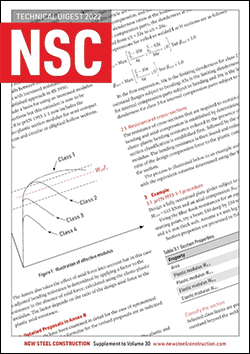Technical
AD 322: Anchorage of precast floor units for robustness
The purpose of this AD is to clarify the situation regarding the requirements for anchorage of precast floor units for robustness.
Clause 2.4.5.3 e) of BS 5950-1:2000 (as amended 2007), provides recommendations for the anchorage of precast concrete or other heavy floor, stair and roof units for Class 2B steel framed buildings. The clause does not specify anchorage forces but refers to BS 8110, although the reference is general, not to any particular clause.
SCI publication P341 (Guidance on meeting the robustness requirements in approved document A) suggests (on page 21) that the anchorage force between precast floor units may be calculated from clause 3.12.3.4 of BS 8110. However, SCI publication P351 (Precast concrete floors in steel framed buildings) refers (on page 47) to clause 5.1.8.3 of BS 8110 for the tying forces between precast floor units. Reference to two different clauses, which give significantly different values of tying force, has caused some confusion.
Clause 5.1.8.3 of BS 8110 gives values of tying force that should ensure that the floor slabs do not collapse locally, should the steel frame be removed or damaged locally. Clause 3.12.3.4 of BS 8110 gives values of tying force that would be needed to tie the structural frame together, and is primarily intended for situations when the floor forms part of the frame; these tying forces are generally much higher than those given by clause 5.1.8.3, which are appropriate where the primary frame (steel or concrete) provides the main resistance to tying forces.
In a steel-framed building, the steel frame itself should be designed to provide the tying resistance necessary to tie it together; reference to clause 3.12.3.4 is then unnecessary. When the steel frame is tied together in this way, the precast slabs only need to have a tying resistance that prevents local collapse of the slab. However, the forces given by clause 5.1.8.3 are based only on the dead load of the floor and P351 recommends instead that the tying force be based on dead load plus one-third live load, to be consistent with BS 5950-1, clause 2.4.5.3 e).
Contact: Andrew Way
Tel: 01344 636525
Email: advisory@steel-sci.com












